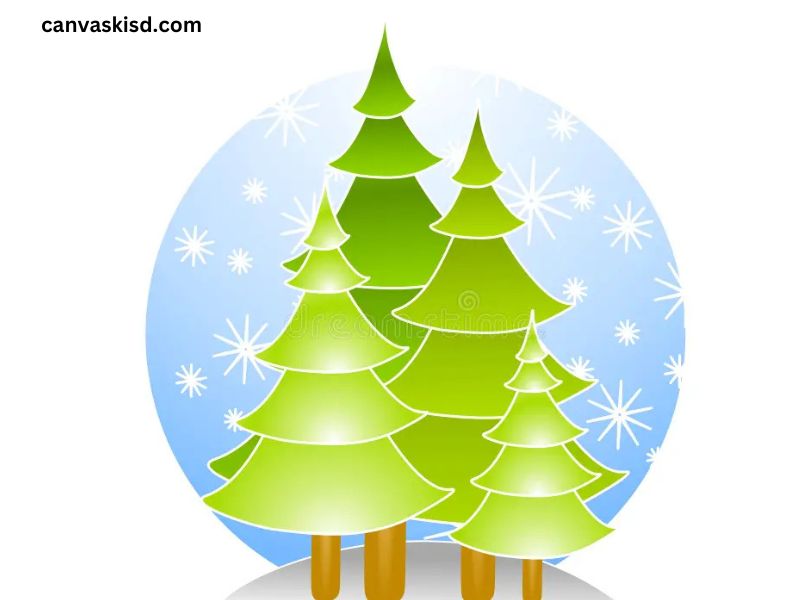The Christmas tree is one of the most recognizable symbols of the holiday season. Every year, families around the world decorate their homes with trees adorned with lights, ornaments, and tinsel. This tradition, rich in history and symbolism, brings a sense of joy and celebration, marking the time of year when people come together to celebrate love, generosity, and hope. In this article, we will explore the origins, evolution, and significance of the Christmas tree, as well as its various cultural adaptations and contemporary practices.
Historical Origins
The Christmas tree tradition has roots that stretch back centuries, with origins that can be traced to ancient pagan practices. Evergreens, such as firs and pines, have long been associated with winter solstice celebrations in various cultures. The ancient Egyptians, for instance, used green palm fronds to symbolize life during the winter months. Similarly, the Romans celebrated Saturnalia, a festival honoring the god Saturn, where they would decorate their homes with greenery.
In Germany during the 16th century, the Christmas tree as we know it began to take shape. It is said that Martin Luther, the Protestant reformer, was the first to add candles to a tree, inspired by the beauty of stars twinkling through the branches. This act symbolized the light of Christ coming into the world, transforming the tree into a Christian symbol.
The Spread of the Tradition
By the 19th century, the Christmas tree tradition had spread across Europe and made its way to America. German immigrants played a significant role in popularizing the Christmas tree in the United States. The first documented Christmas tree in America is attributed to a German settlement in Pennsylvania in the early 1800s.
As the tradition gained popularity, it began to take on various forms. By the mid-19th century, decorated trees were featured in homes, public spaces, and even at the White House. Queen Victoria and Prince Albert’s depiction of a Christmas tree in a family portrait helped solidify the tradition in the English-speaking world.
Decorations: From Simple to Extravagant
Originally, Christmas trees were adorned with simple decorations like fruits, nuts, and handmade ornaments. As time progressed, the decorations became more elaborate. The introduction of glass ornaments in the late 19th century marked a significant turning point. These beautiful, hand-blown ornaments quickly became a staple, adding a touch of elegance to the festive display.
Lights, too, evolved. The use of candles was replaced with electric lights in the early 20th century, making trees safer and more accessible for families. Today, a wide variety of decorations are available, from traditional glass baubles to whimsical and thematic ornaments that reflect personal interests and family traditions.
Symbolism of the Christmas Tree
The Christmas tree is rich in symbolism, representing various themes associated with the holiday season.
- Evergreen Nature: The use of evergreen trees signifies eternal life, hope, and renewal. While the world outside may be cold and barren, the evergreen tree remains alive, reminding us of the promise of new beginnings.
- Light: The lights on a Christmas tree symbolize the light of Christ. In Christian tradition, Jesus is often referred to as the “light of the world,” and the tree serves as a reminder of his presence.
- Family and Togetherness: Decorating the tree is often a cherished family tradition. It brings people together, fostering a sense of community and shared joy.
- Generosity and Giving: The act of gifting ornaments and decorations, as well as the tradition of placing gifts under the tree, embodies the spirit of generosity that characterizes the holiday season.
Global Variations of the Christmas Tree
While the Christmas tree is widely recognized in Western cultures, various countries have their unique interpretations and traditions associated with the tree.
- Norway: In Norway, it is common for people to place a traditional star atop the Christmas tree. Additionally, Norwegians often decorate their trees with homemade ornaments and popcorn strings.
- Mexico: In Mexico, the Christmas tree is often adorned with vibrant colors and symbols of the season, such as piñatas. The “posada” celebrations, which involve reenacting Mary and Joseph’s search for shelter, also feature beautifully decorated trees.
- Japan: In Japan, Christmas is celebrated as a time for romance and friendships rather than a religious holiday. Trees are often decorated with lights and ornaments, but the emphasis is on festive displays rather than traditional symbolism.
- Ethiopia: In Ethiopia, the Christmas tree is not a traditional part of the celebration. Instead, the holiday focuses on religious observances and feasting, with decorations being minimal.
Modern Trends in Christmas Trees
As society evolves, so do Christmas tree traditions. The modern world has seen a rise in alternative tree options, as environmental awareness grows.
- Artificial Trees: Many families opt for artificial trees, which can be reused year after year, reducing waste. These trees come in various sizes and styles, catering to different tastes and preferences.
- Eco-Friendly Trees: Some families choose to rent living Christmas trees or purchase trees from sustainable farms. After the holiday season, these trees can be replanted or returned to the farm.
- Unique Designs: Creative alternatives to traditional trees have emerged, such as wall-mounted trees, minimalist designs, and trees made from unconventional materials like wood pallets or recycled materials.
- Themed Trees: Themed trees, featuring specific color schemes or motifs, have gained popularity. From vintage-style decorations to modern metallics, these trees reflect personal style and creativity.
The Role of Christmas Trees in Contemporary Celebrations
In today’s world, the Christmas tree continues to play a central role in holiday celebrations. From elaborate community displays to intimate family gatherings, the tree serves as a focal point for joy and togetherness.
- Public Displays: Many cities erect grand Christmas trees in town squares, drawing visitors for holiday festivities. These displays often include lighting ceremonies, music, and seasonal markets, fostering a sense of community spirit.
- Family Traditions: For countless families, the act of selecting and decorating the Christmas tree is a cherished tradition. Whether it’s a trip to a tree farm or setting up an artificial tree, the process creates lasting memories.
- Virtual Celebrations: With the rise of digital communication, families separated by distance can still share in the experience of decorating their trees together through video calls and social media, creating a sense of connection despite physical barriers.
Conclusion
The Christmas tree is more than just a decoration; it embodies centuries of tradition, culture, and symbolism. From its origins in ancient pagan customs to its status as a beloved holiday symbol, the Christmas tree brings people together, representing hope, joy, and community. As families continue to create new traditions and adapt the celebration of Christmas, the tree remains a steadfast reminder of the spirit of the season, illuminating homes and hearts around the world.




